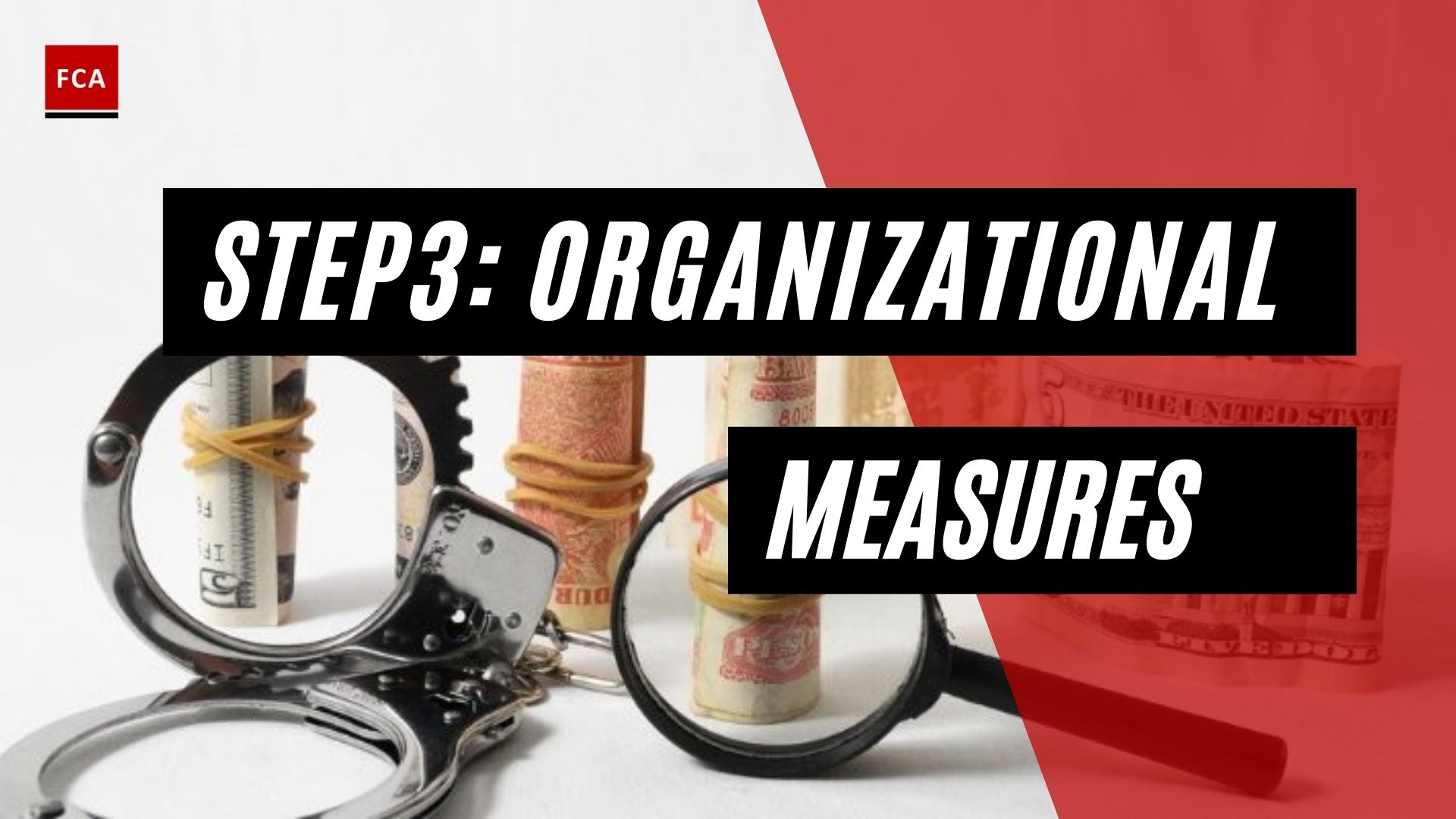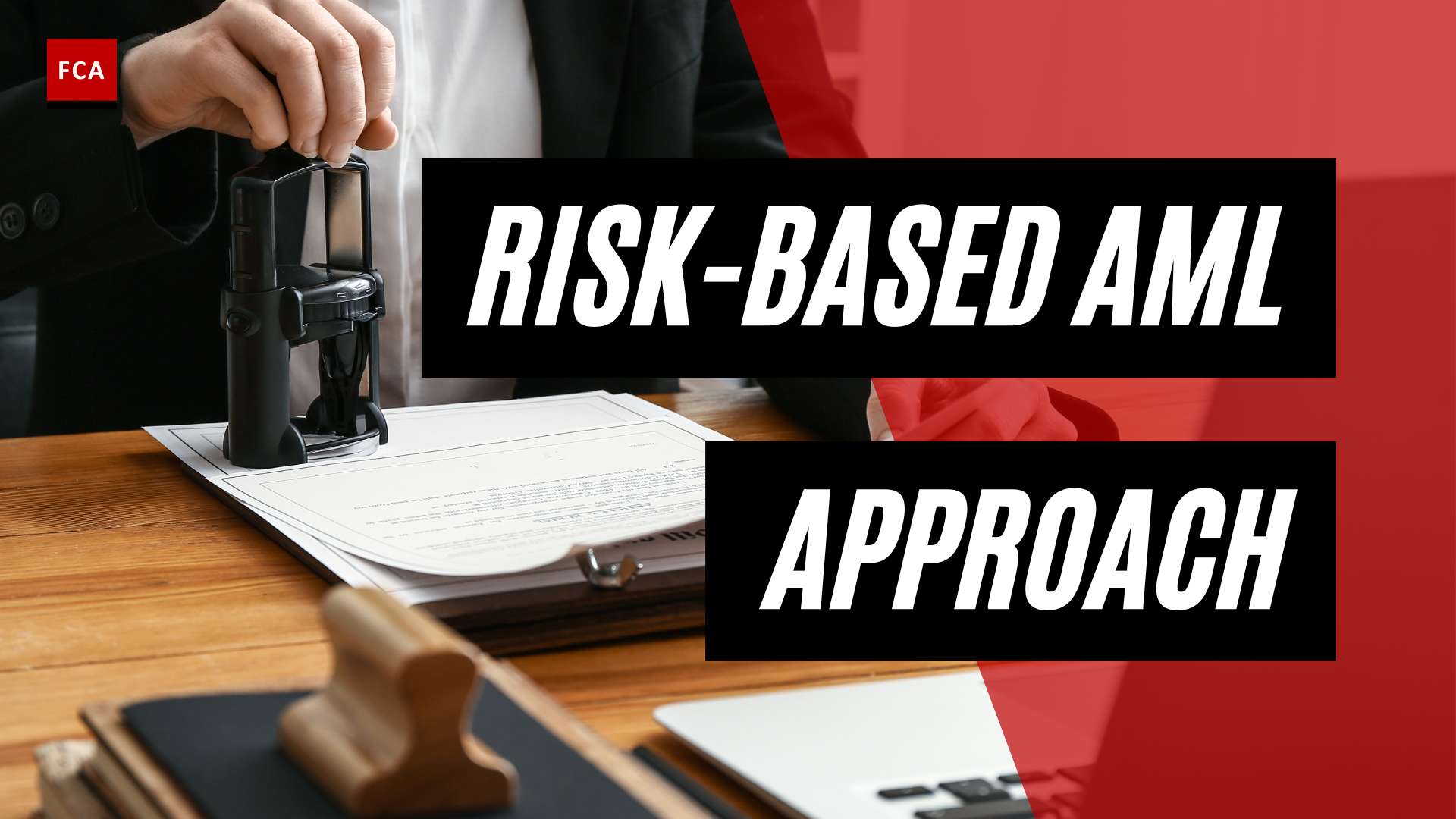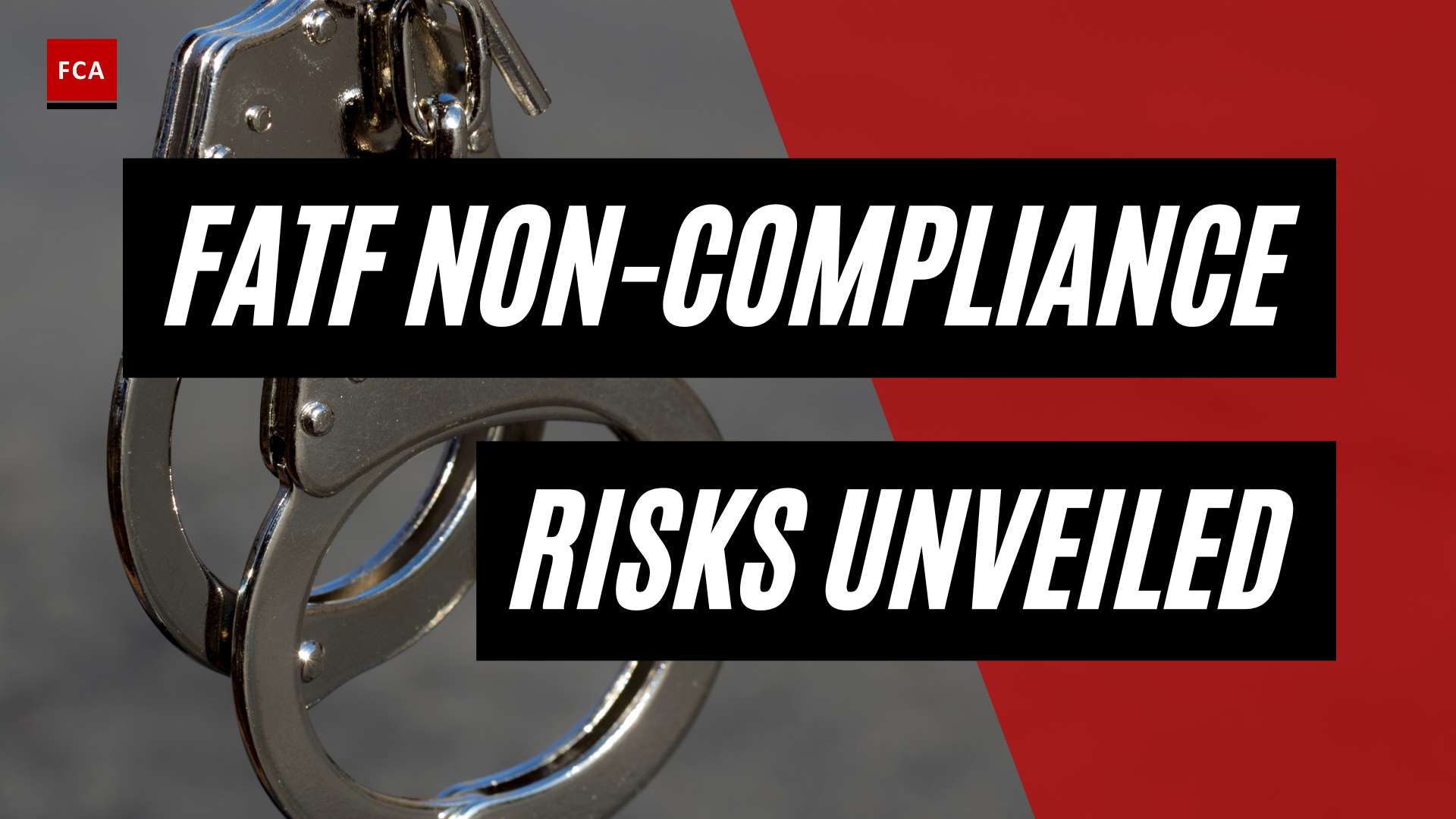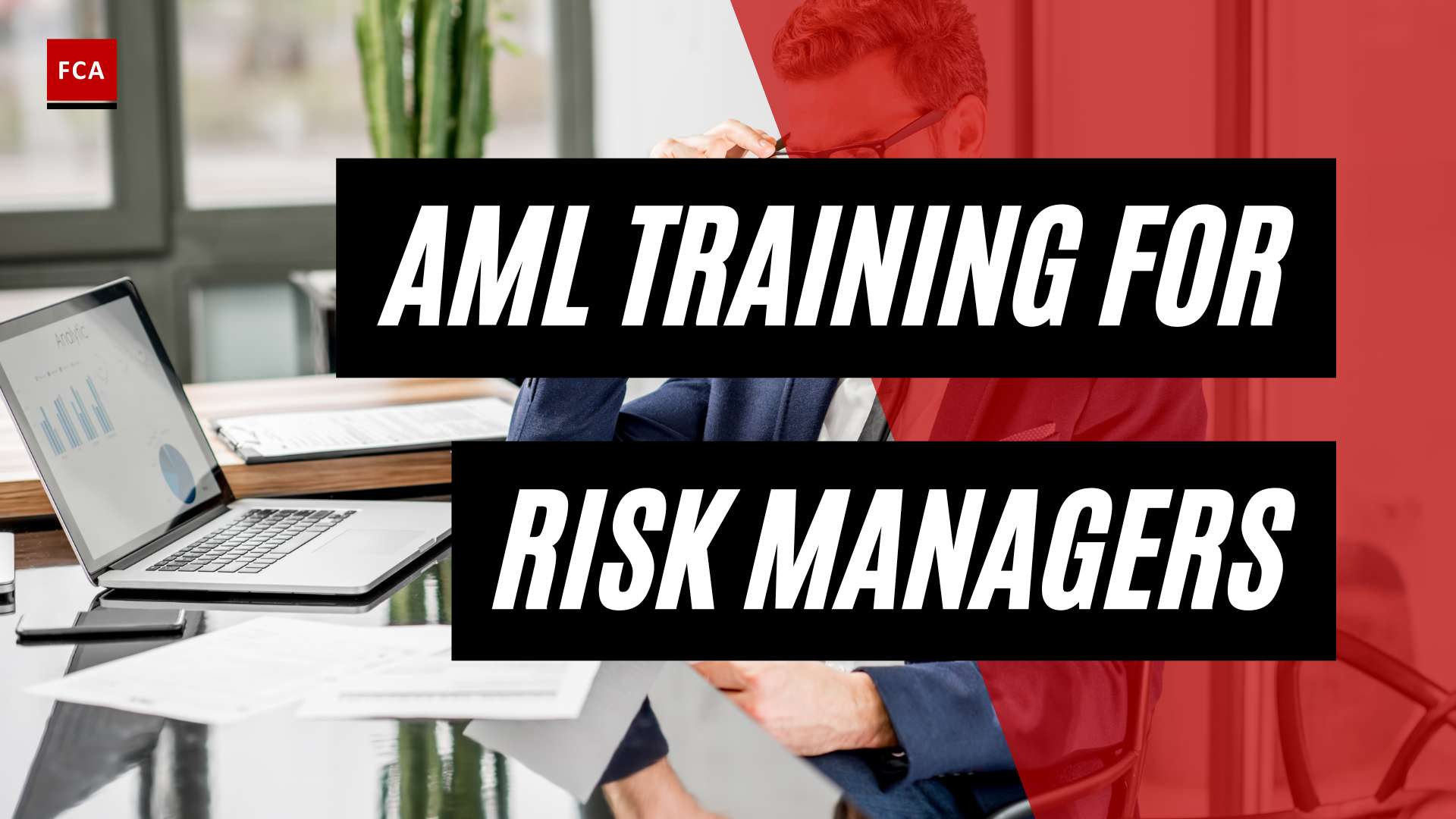AML Regulations for Non-Bank Financial Institutions
Non-bank financial institutions (NBFIs) are not exempt from the stringent requirements of Anti-Money Laundering (AML) regulations. These regulations are designed to prevent criminal activities, such as money laundering and terrorist financing, by ensuring that financial institutions maintain robust compliance measures. Understanding the AML regulations specific to NBFIs is crucial for professionals working in compliance, risk management, anti-money laundering, and anti-financial crime.
Overview of AML Regulations
AML regulations for NBFIs are implemented to mitigate the potential risks associated with their services, such as facilitating the flow of illegally obtained funds. These regulations require NBFIs to establish and maintain comprehensive AML programs to detect and prevent money laundering activities. By adhering to these regulations, NBFIs contribute to the global efforts against financial crimes and help maintain the integrity of the financial system (Investopedia).
Importance of AML Compliance
Compliance with AML regulations is of utmost importance for NBFIs. By implementing effective AML controls, NBFIs can protect themselves and their customers from the risks associated with money laundering and terrorist financing. Failure to comply with AML regulations can result in severe consequences, including legal penalties, fines, reputational damage, and even the loss of operating licenses (Investopedia).
To ensure AML compliance, NBFIs must establish and maintain robust frameworks that encompass various elements, including customer due diligence, transaction monitoring, and reporting suspicious activities to regulatory authorities. Regular risk assessments, ongoing monitoring, and staff training are vital components of an effective AML program. By adhering to these best practices, NBFIs can help safeguard their operations and maintain the trust of their customers.
To enforce AML regulations globally, regulatory bodies such as the Financial Action Task Force (FATF) and the Office of Foreign Assets Control (OFAC) play a crucial role. The FATF sets international standards for AML and counter-terrorist financing efforts, while the OFAC administers and enforces economic and trade sanctions on a global scale. These regulatory bodies ensure consistent implementation and enforcement of AML regulations across jurisdictions.
In conclusion, NBFIs must fully comprehend and comply with AML regulations to protect themselves and their customers from the risks associated with money laundering and terrorist financing. By adhering to these regulations and implementing best practices, NBFIs can contribute to the global fight against financial crimes and maintain the integrity of the financial system.
Compliance Requirements for Non-Bank Financial Institutions
Non-bank financial institutions (NBFIs) are subject to certain compliance requirements to ensure adherence to Anti-Money Laundering (AML) regulations. These regulations are in place to prevent criminal activities such as money laundering and terrorist financing. NBFIs must implement robust AML controls and procedures to meet these requirements. In this section, we will explore three key compliance requirements for non-bank financial institutions: registration and reporting obligations, customer due diligence, and transaction monitoring and reporting.
Registration and Reporting Obligations
To operate legally, non-bank financial institutions must comply with registration requirements imposed by regulatory authorities. Failure to comply with these obligations can result in civil and criminal penalties. In the United States, for example, non-compliance with registration requirements can lead to civil penalties of up to $5,000 for each violation (FinCEN). Engaging in business without adhering to registration requirements is considered illegal and can result in criminal penalties such as fines and imprisonment for a maximum of 5 years (FinCEN).
The specific registration and reporting obligations vary depending on the jurisdiction and the type of non-bank financial institution. For example, in Canada, non-bank financial institutions must fulfill obligations under the Proceeds of Crime (Money Laundering) and Terrorist Financing Act (PCMLTFA) and associated Regulations (Source). It is crucial for NBFIs to understand and comply with the registration and reporting obligations specific to their jurisdiction.
Customer Due Diligence
Customer due diligence (CDD) is a fundamental aspect of AML compliance for non-bank financial institutions. It involves the verification of the identity of customers, as well as assessing and understanding the nature of their business relationships and the risks associated with them. NBFIs must implement CDD measures to prevent their services from being used for illicit purposes.
Financial entities, including non-bank financial institutions, are required to verify the identity of persons and entities for certain activities and transactions (Source). This includes obtaining and verifying information such as the customer’s name, address, and identification documents. By conducting thorough customer due diligence, NBFIs can mitigate the risks associated with money laundering and terrorist financing.
Transaction Monitoring and Reporting
Non-bank financial institutions are also responsible for monitoring customer transactions for suspicious activities and reporting them to the appropriate regulatory authorities. Transaction monitoring involves the ongoing review and analysis of customer transactions to detect any potential signs of money laundering or other illicit activities.
Financial entities, including NBFIs, have ongoing monitoring requirements when they enter into a business relationship with a client. This includes monitoring the transactions conducted by the customer and assessing whether they are consistent with the customer’s profile and expected activities. If any suspicious transactions are identified, NBFIs must promptly report them to the relevant regulatory authorities.
By fulfilling these compliance requirements, non-bank financial institutions play a crucial role in combating money laundering and terrorist financing. Implementing robust AML frameworks, conducting regular risk assessments, and providing ongoing staff training are essential for maintaining compliance and ensuring the integrity of the financial system.
In the next sections, we will explore best practices for AML compliance and discuss the global regulatory oversight by organizations such as the Financial Action Task Force (FATF) and the Office of Foreign Assets Control (OFAC). Additionally, we will examine the role of banks in AML compliance for non-bank financial institutions, including risk assessment of NBFI customers, due diligence and resource allocation, and managing money services businesses (MSBs).
Consequences of Non-Compliance
Non-compliance with anti-money laundering (AML) regulations can have significant consequences for non-bank financial institutions (NBFIs). It is essential for NBFIs to understand the potential repercussions and take appropriate measures to ensure compliance. The consequences of non-compliance include civil and criminal penalties, reputational damage, and loss of operating licenses.
Civil and Criminal Penalties
Non-bank financial institutions that fail to comply with AML regulations may face civil and criminal penalties. The exact penalties vary depending on the jurisdiction and the severity of the non-compliance. In the United States, for example, non-compliance with registration requirements can result in civil penalties of up to $5,000 for each violation, with each day of violation considered a separate offense. Filing false or materially incomplete information is also considered failure to comply. Engaging in business without adhering to registration requirements can be deemed illegal, leading to criminal penalties that may include fines and/or imprisonment for a maximum of 5 years.
Reputational Damage
Failure to comply with AML regulations can significantly damage the reputation of non-bank financial institutions. News of non-compliance, regulatory penalties, or involvement in money laundering activities can spread quickly and erode customer trust. Reputational damage can lead to a loss of existing customers, difficulty in acquiring new customers, and overall harm to the business’s long-term viability. Rebuilding trust and restoring a damaged reputation can be a challenging and time-consuming process.
Loss of Operating Licenses
Non-compliance with AML regulations can result in the loss of operating licenses for non-bank financial institutions. Regulatory authorities have the power to suspend or revoke licenses of institutions that fail to meet their AML obligations. Losing the ability to operate can have severe consequences, including the potential closure of the business. This loss not only impacts the institution’s financial stability but also affects its employees and stakeholders.
It is crucial for non-bank financial institutions to understand the gravity of non-compliance with AML regulations. Implementing robust AML controls, developing comprehensive AML programs, and ensuring proper training and adherence to AML procedures and policies are essential to mitigate the risk of non-compliance. By prioritizing compliance, NBFIs can protect themselves from the potential civil and criminal penalties, reputational damage, and loss of operating licenses that come with non-compliance.
Best Practices for AML Compliance
Non-bank financial institutions (NBFIs) must adhere to AML regulations to prevent money laundering and terrorist financing activities. To ensure compliance and mitigate the risk of non-compliance consequences, NBFIs should implement the following best practices:
Developing Robust AML Frameworks
Developing a robust AML framework is essential for effective compliance. This framework should outline the policies, procedures, and controls that NBFIs will implement to prevent and detect money laundering and terrorist financing activities. It should also include mechanisms to ensure ongoing review and improvement of AML measures.
Key elements of a robust AML framework include:
- AML Program: Establishing an AML program that encompasses all necessary components, including customer due diligence (CDD), record-keeping, transaction monitoring, and reporting of suspicious activities.
- Internal Controls: Implementing internal controls to identify and mitigate money laundering risks across the institution. This may include establishing segregation of duties, conducting regular internal audits, and maintaining an independent compliance function.
- AML Policies and Procedures: Developing and implementing comprehensive AML policies and procedures that are tailored to the specific risks faced by the NBFI. These policies should cover areas such as customer onboarding, risk assessment, ongoing monitoring, and reporting.
- Training and Awareness: Providing regular AML training to employees at all levels to ensure they understand their obligations and can effectively identify and report suspicious activities.
Conducting Regular Risk Assessments
Regular risk assessments are crucial for identifying and understanding the money laundering and terrorist financing risks specific to an NBFI. These assessments help in determining the appropriate level of due diligence required for customers and transactions.
Key considerations for conducting risk assessments include:
- Customer Risk: Assessing the inherent risk associated with different types of customers, such as high-net-worth individuals, politically exposed persons (PEPs), or foreign customers.
- Product and Service Risk: Evaluating the risks associated with specific products or services offered by the NBFI, such as correspondent banking relationships or money service businesses.
- Jurisdictional Risk: Considering the risks associated with operating in different jurisdictions, particularly those with weaker AML regimes or higher levels of corruption.
Regular risk assessments enable NBFIs to identify and prioritize areas of concern, ensuring that appropriate controls and monitoring mechanisms are in place to address the identified risks.
Ongoing Monitoring and Staff Training
To effectively combat money laundering and terrorist financing, NBFIs must establish ongoing monitoring systems and provide continuous training to their staff.
Key aspects of ongoing monitoring and staff training include:
- Transaction Monitoring: Implementing automated systems or manual processes to monitor customer transactions and activities for unusual or suspicious patterns. This allows for the timely detection and reporting of potential money laundering activities.
- Staff Training: Providing regular AML training to all employees to enhance their understanding of money laundering risks, detection techniques, and reporting obligations. Training should be tailored to specific roles and responsibilities within the NBFI.
- Adapting to Regulatory Changes: Staying updated on regulatory changes and evolving money laundering techniques to ensure that AML programs remain current and effective.
By regularly monitoring transactions and providing ongoing training, NBFIs can proactively identify and respond to potential money laundering and terrorist financing activities, reducing the risk of non-compliance.
Implementing these best practices not only helps NBFIs meet their AML compliance obligations but also demonstrates their commitment to combating financial crime. By staying ahead of regulatory changes and continually improving their AML frameworks, NBFIs can enhance trust with regulators, customers, and other stakeholders, while safeguarding their institution from the severe consequences of non-compliance.
Global Regulatory Oversight
In the realm of AML regulations for non-bank financial institutions, global regulatory bodies play a crucial role in setting standards and ensuring compliance. Two prominent entities that oversee the enforcement of AML regulations on a global scale are the Financial Action Task Force (FATF) and the Office of Foreign Assets Control (OFAC).
Financial Action Task Force (FATF)
The Financial Action Task Force (FATF) is an intergovernmental organization that sets international standards and promotes the implementation of legal, regulatory, and operational measures to combat money laundering, terrorist financing, and other related threats to the integrity of the international financial system. Its recommendations are widely recognized and adopted by countries around the world to strengthen their AML frameworks.
The FATF’s primary objective is to develop and promote policies to protect the global financial system from money laundering and terrorist financing risks. It regularly reviews and updates its recommendations to adapt to evolving threats and ensure the effectiveness of AML measures. Non-bank financial institutions are expected to align their AML programs with the FATF’s standards to maintain compliance and mitigate the risks associated with illicit financial activities.
Office of Foreign Assets Control (OFAC)
The Office of Foreign Assets Control (OFAC) is a U.S. government agency that administers and enforces economic and trade sanctions based on U.S. foreign policy and national security goals (OFAC). While its primary focus is on sanctions enforcement, OFAC also plays a crucial role in combating money laundering and terrorist financing.
For non-bank financial institutions operating within the United States or conducting transactions involving U.S. jurisdictions, compliance with OFAC regulations is essential. OFAC’s regulations require financial institutions to block the assets of designated individuals and entities and report any suspicious transactions related to sanctioned countries or individuals. Non-compliance with OFAC regulations can result in significant penalties and reputational damage.
International AML Standards
Both the FATF and OFAC contribute to the establishment and dissemination of international AML standards. By adhering to these standards, non-bank financial institutions can enhance their AML frameworks and demonstrate their commitment to combating money laundering and terrorist financing.
It is important for non-bank financial institutions to stay updated on the evolving AML landscape and the recommendations provided by global regulatory bodies. By doing so, they can ensure that their AML programs are effective, robust, and in line with international standards. A strong partnership between regulatory bodies and non-bank financial institutions is crucial in the ongoing fight against money laundering and the preservation of the integrity of the global financial system.
Role of Banks in AML Compliance for NBFIs
When it comes to AML compliance for non-bank financial institutions, banks play a crucial role in ensuring the effectiveness of anti-money laundering measures. As financial intermediaries, banks are responsible for assessing the risks posed by their non-bank financial institution (NBFI) customers and implementing appropriate due diligence and resource allocation strategies.
Risk Assessment of NBFI Customers
Banks should assess the risks associated with their NBFI customers to identify potential vulnerabilities and allocate resources accordingly. Factors taken into consideration during risk assessment include the size, nature of business, types of transactions, geographic locations, and reputation of the NBFI customer. By conducting a comprehensive risk assessment, banks can identify higher-risk NBFI accounts that require enhanced due diligence and monitoring.
Due Diligence and Resource Allocation
Based on the results of the risk assessment, banks are expected to conduct due diligence commensurate with the level of risk identified for each NBFI customer. If a higher risk of money laundering or terrorist financing is identified, banks should perform additional due diligence measures aligned with the heightened risk (BSA/AML Manual). This due diligence process may involve obtaining additional documentation, verifying the source of funds, or assessing the beneficial ownership structure.
Moreover, banks should allocate resources in accordance with the money laundering risks associated with their NBFI customers. By dedicating appropriate resources, banks can effectively monitor and detect suspicious activities within their NBFI portfolio. This includes deploying advanced technology and analytics to enhance detection capabilities and ensure compliance with AML reporting obligations.
Managing Money Services Businesses (MSBs)
Banks that maintain account relationships with Money Services Businesses (MSBs) have specific responsibilities in managing the associated AML risks. It is crucial for banks to develop robust policies, procedures, and processes to assess the money laundering risks posed by their MSB customers. These policies should be in line with regulatory requirements, including the anti-money laundering program rule, suspicious activity reporting, currency transaction reporting, and other identification and recordkeeping rules (BSA/AML Manual).
By managing the risks associated with all accounts, including those held by NBFIs, banks contribute to the overall integrity of the financial system. The collaboration between banks and NBFIs is essential in combating money laundering and terrorist financing activities, ensuring compliance with regulatory standards, and maintaining the integrity of the financial sector.








